Put down the soy sauce! We try a new “expert” way to season your sushi【Taste test】
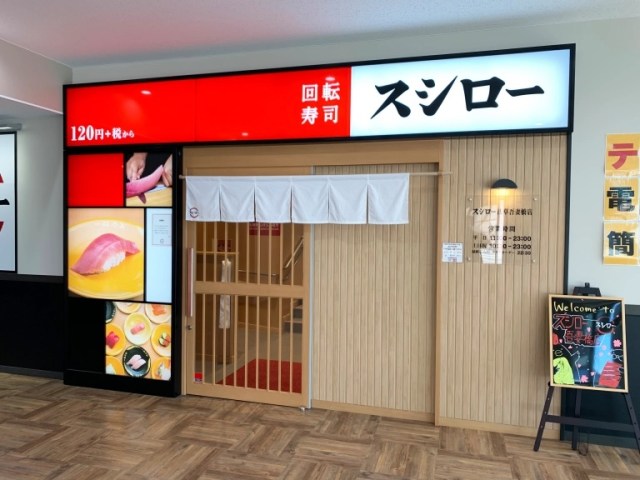
Conveyor belt sushi chain Sushiro lets us in on a new way to use flavors that were right there the whole time.
At conveyor belt sushi restaurants, the belts don’t just bring your food to you, but also display notices about new or seasonal menu items. So on a recent visit to popular chain Sushiro, our Japanese-language reporter Seiji Nakazawa kept his eye out to see what the staff was recommending.
Sure enough, before long a plate with a placard on it came down the line, with a message about the restaurant’s tai (sea bream/red snapper). Honestly, it’s a pretty common sushi offering, but this recommendation wasn’t about the fish itself, but how to eat it.
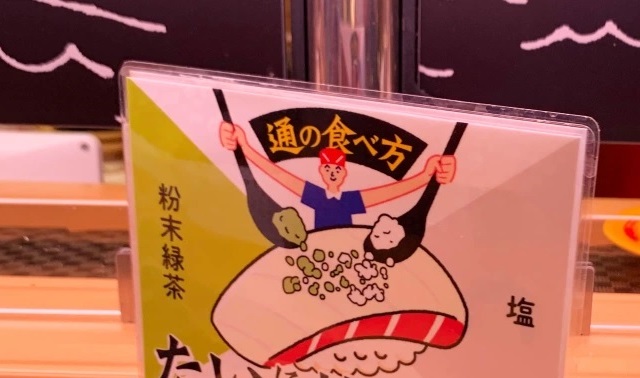
The standard condiments for sushi are soy sauce and wasabi, Mix them together in a small plate, give your piece of sushi a quick dab, and the flavor of the rice and fish are complemented by salty and spicy accents. However, the placard was suggesting something very different, which Sushiro says is “the expert’s way” to eat tai.
▼ Tai sushi

You’ll leave the soy sauce bottle untouched for this seasoning method. Instead, you need some salt (Sushiro provides it in small packets) which you sprinkle on top of the fish.
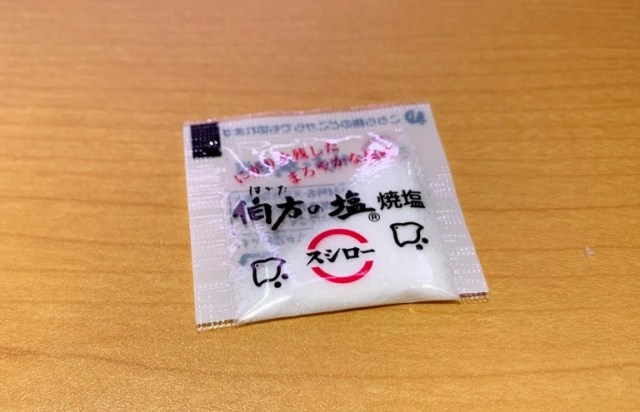
But the real magic happens next, when you add a dash of matcha green tea powder!
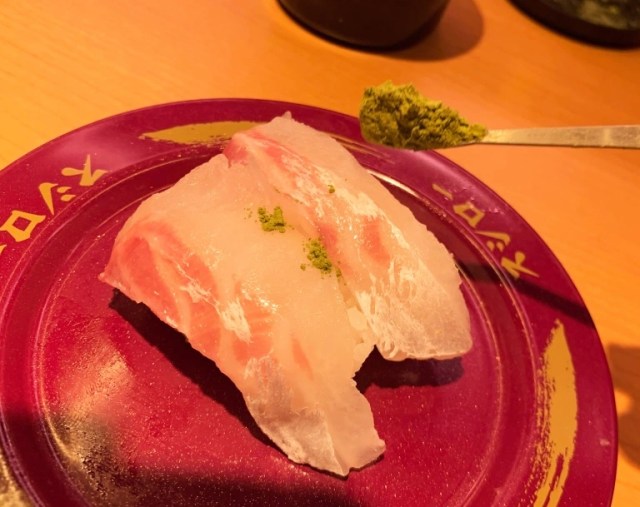
Pretty much every conveyor belt sushi restaurant in Japan offers complimentary green tea that customers can make for themselves at their seats, which are equipped with hot water spigots. While some places give you tea bags, Sushiro has containers of powdered green tea on its counters/tables, so it’s simply a matter of using the spoon to give your sushi a tea powder dusting.
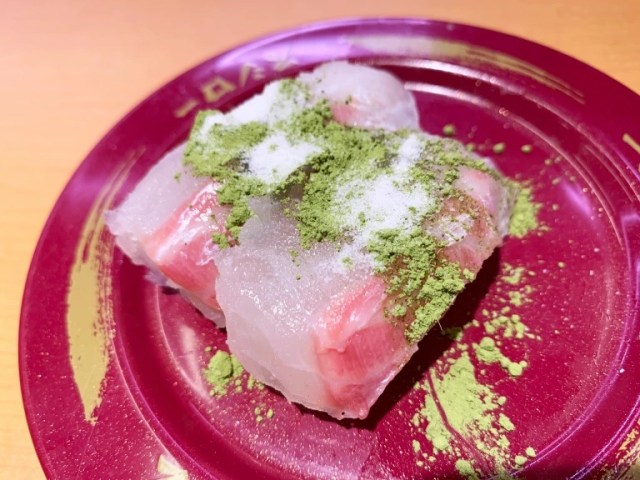
Combining salt and green tea powder, which together are called matchajio, is actually a popular way to season tempura, but Seiji had never tried it with sushi before. As soon as he took a bite, though, he was glad that Sushiro had given him this tip. Not only was the salty and pleasant bitterness of the mixture tasty in its own right, it helped draw out more of the tai’s flavor too, and with the sweetness of the fish and the tang of the vinegared rice, his entire palate was stimulated.
In retrospect, Seiji does wish he’d used a little less matcha, and also maybe combined the tea and salt in a dish first instead of applying them one at a time directly to fish, in order to get a more uniform mixture. There’s a slight drawback in that the fine-grain powder of the matcha makes for a bit dryer mouthfeel, especially since eating your sushi this way means you’re not adding the moisture you’d ordinarily get from the dab of soy sauce. It’s also likely that the salt-and-match seasoning works best with sushi like tai that has a sweetness to it, as opposed to the fishier flavor of something like, say, mackerel.
Because of that, Seiji doesn’t regret all the times in his life up until now that he’s eaten sushi with regular old soy sauce and wasabi. Still, he gives Sushiro’s “expert” style the thumbs up, and since sushi is traditionally served with two pieces per order, there’s always the option of eating one piece each with the different seasonings to double up on flavor variety.
Photos ©SoaNews24
● Want to hear about SoraNews24’s latest articles as soon as they’re published? Follow us on Facebook and Twitter!
Credit:

0 comments:
Post a Comment